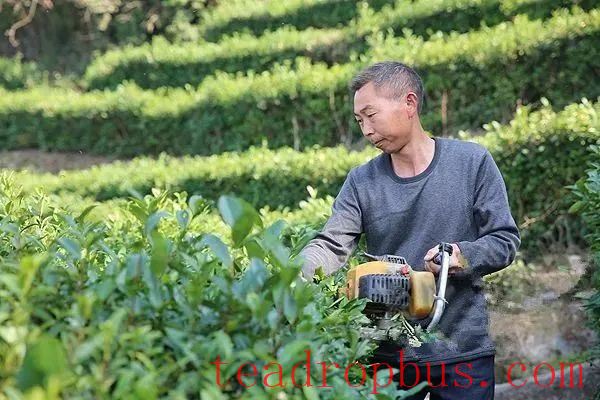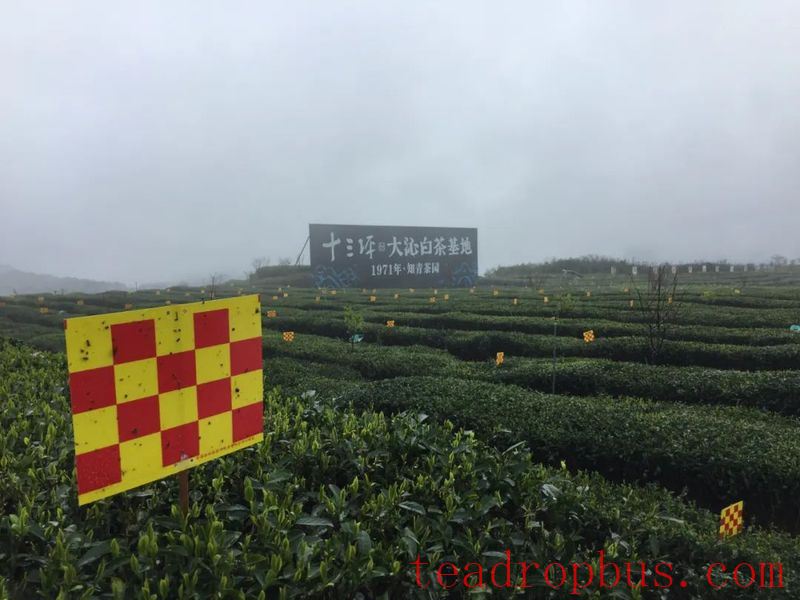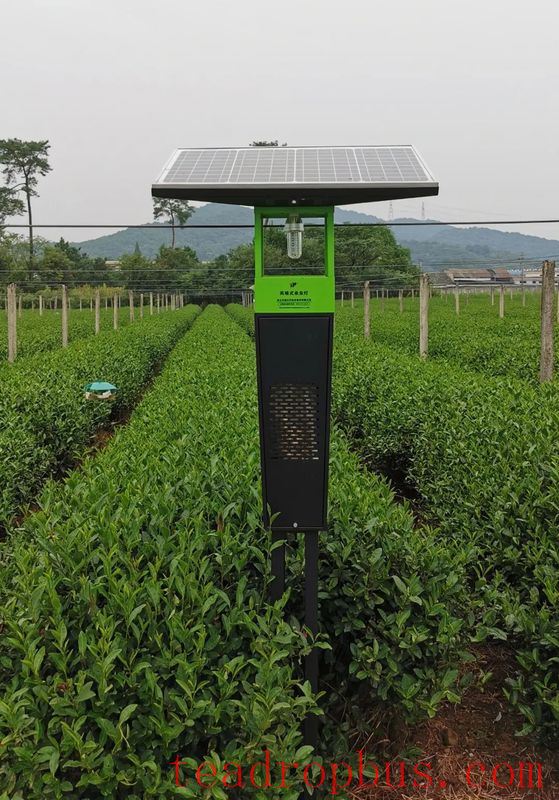Physical control
Physical control is a method that uses various physical factors, manual labor, or machinery to manage crop pests. This includes simple manual removal up to modern smart equipment that directly or indirectly eliminates pests, disrupts their normal physiological activities, or creates environmental conditions that are unacceptable or intolerable for the pests. In integrated pest management (IPM), physical control often serves as a supplementary measure. However, in certain situations, such as the management of specific pests or high-value crops and products, it can be the primary control measure.
1. Common Physical Control Techniques in Tea Gardens
1.1 Manual Elimination
Timely elimination of pests in tea gardens that exhibit strong aggregation, are easily noticeable, or have a feigning death behavior can reduce the population of these pests. For example, during the peak emergence period of tea seed weevil adults, utilizing their feigning death behavior, shaking the tea plants to capture fallen adults can result in an adult mortality rate of 88.2%.

1.2 Harvesting and Pruning
Regular, batched harvesting can increase tea yield and suppress diseases and pests affecting the canopy buds and leaves. At least 12 types of tea pests can be controlled through harvesting. Studies show that when harvesting one Bud with two or three leaves, the removal rates for small green leafhoppers (eggs), tea orange spider mites, tea eriophyid mites, tea aphids, and tea yellow thrips reach 63.5%, 58.2%, 93.2%, 90.0%, and 90.8%, respectively. The more leaves harvested below the bud, the higher the removal rate. The more frequent the annual harvests, the stronger the ecological regulation effect on pests.
In addition, light pruning can effectively suppress diseases and pests in the tea canopy. For severe diseases and pests in mature or old leaves, deep or heavy pruning can be performed to remove branches carrying pests and diseases.

Tea Plant Pruning
1.3 Sticky Traps and Insect Lights
Sticky traps are commonly used in tea gardens, utilizing the color preference of some pests combined with sticky glue to trap and kill them. Insect lights, another common physical control technique, use the phototaxis of certain pests combined with water trays, electric grids, or fans to trap and kill them. Theoretically, any tea pests with phototaxis can be controlled using insect lights, including most Lepidopteran pests and some important Hemipteran and Coleopteran pests. Common tea pests suitable for control using sticky traps and insect lights are listed in Table 2.

2. Disadvantages of Physical Control Techniques
2.1 Environmental Pollution
With growing environmental awareness, some physical control techniques have been found to negatively impact the ecological environment. For instance, sticky traps and insect lights can attract and kill a large number of beneficial and neutral insects, potentially disrupting the ecological balance in tea gardens. Low-quality sticky traps made from non-biodegradable PP plastic can cause plastic pollution if discarded irresponsibly. Some insect lights with high-powered light sources and high installation densities can lead to light pollution in tea gardens. Acoustic control technology can also cause noise pollution in tea gardens and surrounding areas.
2.2 High Costs
The rising cost of labor is one of the most serious issues facing the tea industry. In most tea gardens in China, mechanization and intelligentization levels for plant protection are still relatively low, requiring many physical control techniques to be implemented manually. The high cost of equipment is another drawback of physical control, as agricultural machinery generally costs significantly more than chemical pesticides, especially complex and sophisticated equipment like suction machines, insect lights, and acoustic-optical smart green control devices.
3. Development of Physical Control Techniques in Tea Gardens
3.1 Optimization of Control Techniques
3.1.1 Sticky Traps
A single color is insufficient to ensure the mass trapping of target pests while minimizing the capture of other insects. Therefore, improvements to sticky trap technology mainly focus on selecting colors that can attract more target pests. Some tea garden insects share a preference for certain colors, such as yellow, which can attract many insect species. Based on understanding the visual mechanism and host location of the tea green leafhopper, researchers first identify the optimal trapping color for the target pest, then select the repelling color for dominant natural enemies through field trials. The base pattern is designed with an equal distribution of the two colors to trap leafhoppers and repel natural enemies. Biodegradable materials are used to make the double-color sticky trap. Compared to single-colored sticky traps, the double-color sticky trap increases the trapping efficiency of tea green leafhoppers by 30% to 50% while reducing the capture of natural enemies by 30%.

3.1.2 Insect Lights
Improvements in insect light technology have shifted from a focus on quantity to precision in trapping. The aim is to trap more target pests while reducing the capture of beneficial and neutral insects. In addition to the light source, the selection of insect-trapping equipment should consider the phototaxis behavior and body size of the pests. The wavelength range of the light source can be selected based on the differences in phototaxis among insects, targeting the spectral range attractive to the target pest while avoiding wavelengths that attract non-target pests like dominant natural enemies. The appropriate insect-killing device can then be chosen based on the phototaxis behavior and body size of the target pest.
The Tea Pest Management Team at the Chinese Academy of Agricultural Sciences' Tea Research Institute, after determining the spectral sensitivity and recognition range of the tea green leafhopper's compound eyes, measured the phototaxis characteristics of the leafhopper and dominant natural enemies such as ladybirds and parasitic wasps. They designed a light source specifically for leafhoppers using long-lasting LED lights with narrow emission spectra, combined with wind suction negative pressure and self-sealing killing devices, to develop specialized LED insect lights for tea gardens. Compared to frequency-shaking grid-type insect lights, LED insect lights increase the trapping of leafhoppers by 321% to 415% and decrease the capture of natural enemy insects in tea gardens by 88%.

3.2 Selection and Application of Techniques
3.2.1 Technique Selection
The diversity of colors in tea garden sticky traps is influenced not only by production technology but also by the differential behavioral responses of different insects to different colors. Climate, geographical location, and the age and sex of insects can all affect color preferences. The effectiveness of double-color sticky traps varies across different regions. Therefore, choosing the appropriate sticky trap requires reviewing relevant literature, comprehensively analyzing the color responses of local target pests and natural enemy insects, and considering the biodegradability of the sticky traps to avoid pollution in tea gardens.
The selection of insect lights should be based on the phototaxis behavior and physiological characteristics of the pests and dominant natural enemies, choosing the appropriate light spectrum range and insect-killing device.
3.2.2 Technique Use
The flight height, search range, and activity peaks of pests are important considerations for the timing and method of implementing physical control techniques. Different insects exhibit significant variations in flight ability, visual range, and activity rhythms. The height, orientation, and density of sticky traps, as well as the height of insect light sources, significantly affect control efficacy. Thus, during the implementation of physical control, attention should be paid to the flight range and activity peaks of target pests in tea gardens, avoiding the activity peaks of natural enemy insects to minimize negative impacts on the tea garden ecosystem. This is currently the most critical aspect to consider when using physical control techniques in tea gardens.
4. Trends in the Development of Physical Control Techniques
4.1 R